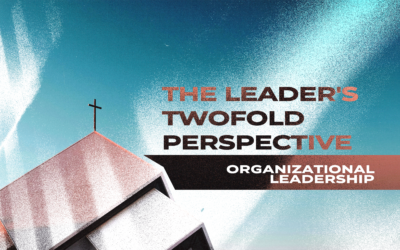This marks the third practical key in navigating a conflict towards resolution. Unlike the mindsets, which guide your thinking, you do the three keys. Actual, practical words and behaviors that will increase your skills to resolve conflict. Add them to your leadership skill set to improve your leadership.
To be sure, additional keys exist beyond these three. But, using these three keys increases the likelihood of resolving the conflict while maintaining the relationships between the people involved.
Remember Key #1: Position the conversation as the two parties working together against the problem/conflict.
Then, we saw the importance of Key #2: Gain some type of agreement at the beginning of the conflict resolution meeting.
Today’s Key #3: Establish ground rules at the outset.
Like Key #2, you also use Key #3 at the beginning of the meeting between the two parties. Right after doing Key #2, implement Key #3. Establish ground rules for your meeting together.
At the beginning of the meeting, you have everyone’s attention. Emotions run high. The participants have been wrestling with this issue for a while now. They came to the same table. Their defenses are up. They probably want resolution, but they definitely don’t want to be taken advantage of. They already feel slighted. And agitated. Maybe hurt. Angry. Fearful. Unjustly treated. It won’t take much for this situation to get worse. You want to make it better. Establishing guidelines provides a framework for this situation to improve.

Like guardrails along a roadside, key #3 keeps the travelers out of the ditch and moving towards their destination. And, just like guardrails, they provide protection for the participants. Guardrails and guidelines provide security. As you know, when driving a car, you may hit a guardrail and do some damage to your car. But, you also know the guardrail keeps you from going over a cliff. Key #3 performs that function for a conflict situation.
Guidelines, like guardrails, provide security in dangerous areas.
After gaining agreement, establish the ground rules.
Even sports contests start this way. The participants meet on the field of play before the game begins. The two parties acknowledge agreement to the rules of play by assembling together in front of a referee or for a song or a prayer. The game requires concession to the rules by all the players involved. Their presence shows that, although they are on opposite sides, they adhere to the same guidelines. This happens all over the world. Whether they play soccer, American football or tae kwon do, they adhere to a defined set of rules.
The two boxers meet in the middle of the ring. Once the referee reviews the rules, they touch gloves, indicating agreement. That touching tells the fighters and everyone who is watching, “We will follow the rules.” Football starts with the captains, representatives of the two opposing teams, meeting at midfield. And, because people regularly see this in sports, they are less likely to object, even in a heated situation. So, use this idea to move your two opponents together.
So, what ground rules should you establish?
a. Clarify the intended result.
You, as facilitator, to lead both parties to lean into the future, together.
The goal is restoration and reconciliation.
Making clear the desired result of your meeting can be stated like this: “We are here to resolve an issue, a problem. We want to move forward together. Our goal today is reconciliation, restoration. Currently, there is a problem. So, we are here right now to resolve it and to move forward, together, in unity.”
Often, one or the other of the parties (at the table) think you meet to recreate all the events that created the problem. That is not why you are there. And, we all intuitively know that you can never recreate the past to the satisfaction of both parties, especially when they are in conflict.

As an example, you and I can watch the same thirty second video clip. If each of us were asked to describe that video clip, there is no way we would describe it exactly the same. And, you and I are not in a conflict situation. So, don’t waste a lot of time trying to recreate the past. You need to know enough about the past to know what happened, but avoid “he said, she said.” It leads to more aggravation. It also leads backwards, to the past. That’s not where you are going. You make clear that the direction is forward, towards the future.
After clarifying that your goal is restoration, describe the second aspect of establishing the ground rules:
b. Define acceptable & unacceptable behavior for the meeting.
Defining appropriate behavior goes something like this, “We are here to resolve an issue, a problem (see a.). We will treat each other with respect. That means no yelling, no name calling. Don’t do anything that would be offensive or demeaning to the other person/party. If you do, I will call you on it. It won’t be allowed.”
When facilitating a conflict between two people or two groups of people, there have been times where I didn’t do this immediately. I looked at the parties, thinking, “These seem like reasonable people. They don’t seem like the kind of people who would blow up at each other or start screaming at each other.” So, I didn’t define acceptable behavior. Invariably, shortly after that thought, somebody started yelling. What did I do? I defined acceptable and unacceptable behavior. Even well-meaning people will act out, given enough pressure. And, conflict creates pressure. Help them and the process by declaring what is acceptable and what is not.
So, what happens if someone violates the described behavior? And, this does happen, by the way. If somebody does start yelling, or violates the ground rules, you do what you told them you would do. You call them on it. Literally. Directly. If, for example, Jonathan starts yelling, I will say, “Jonathan!” If he continues yelling, I repeat, “Jonathan!”

Stick with the one word, the person’s name. Call it the “broken record” approach. The “broken record” refers to the days when vinyl records played the most music. With those records, every now and then the vinyl record would get a scratch. When the record scratched, the needle (which transmitted the music from the record to the speaker) would play the same part of the record over and over and over and over…until you lifted the needle. The same words. Over and over again. The “broken record” approach in conflict says the same word until the anger subsides. And, of course, you direct the rest of the group not to say anything while this is happening.
Conflict situations lug a lot of emotion. They are anything but easy. But, when you enter them with the necessary mindsets, and use the three keys to create peace, you are much more likely to achieve resolution and restoration.
What have you found to work well in conflicts? In the space below, please share how you have either resolved conflict yourself, or seen someone else do it?
(Missed Parts 1 and 2? Catch up here and here.)
Who We Are
LeaderINCREASE helps leaders get clear on where to go and understand how to get there, with less hassle. We understand that choosing to make a difference as a leader isn’t always the easiest.
We focus on providing leaders with resources they need to make a difference and become actionable leaders for their organization. We look forward to helping you achieve your goals as we have done for many others.




